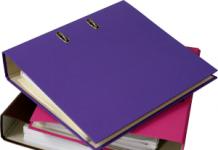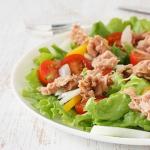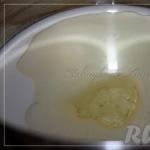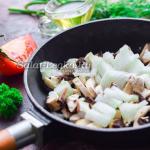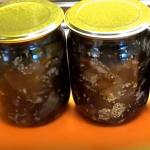Which drywall is best for walls: choosing material for sheathing
The choice of material for leveling the walls of a room is quite difficult task even for a professional. Well, then what can we say about a beginner whose questions are “What is better - plywood or drywall?” or “What should it be optimal thickness gypsum board for sheathing? will inevitably lead to a dead end.
Below we will try to understand the intricacies of choosing the appropriate type of gypsum plasterboard, and also consider the pros and cons plasterboard sheathing in comparison with the use of other building materials.
GKL wall covering
Plasterboard for covering the walls of a room
Varieties of gypsum plasterboards
Drywall is a finishing material, the basis of which is a gypsum core, protected on both sides by multilayer cardboard .
Depending on the composition of these two elements, the following types of gypsum plaster are distinguished:

- GKL - standard. This plasterboard is most widely used; it is used for covering walls and ceilings in rooms with normal humidity conditions.
It has low fire-retardant characteristics and is therefore not suitable for use in areas where there is a risk of fire. The price of this material is the most affordable. - GKLV - waterproof. Suitable for leveling surfaces in damp rooms, as well as where walls or ceilings are periodically exposed to precipitation, for example, on loggias.
The cardboard layer is impregnated with a hydrophobic composition, due to which the drywall practically does not absorb moisture.
Pay attention!
An additional advantage of GKLV is its fungicidal impregnation, which protects the surface of the material and the gypsum core from damage by fungal infections.
- GKLO – fire-resistant plasterboard. Fiberglass reinforcement is introduced into the gypsum filler, and the cardboard is impregnated with fire retardants (substances that reduce flammability).
Moreover, even after the cardboard layer burns out, a partition made of fire-resistant plasterboard, due to sintering of fiberglass, retains its shape and prevents the spread of flame. - GKLVO – combined, combines moisture-proof and fire-retardant properties. The most expensive type of gypsum board.
Choosing gypsum board
For wall cladding, the so-called wall gypsum board is used, the thickness of which is 12.5 mm. There are also ceiling (9.5 mm) and arched (7.5 - 8 mm) varieties of material.
Both of these varieties can also be used to level the walls of a room, but only if the requirements for mechanical strength the sheathing will be quite low.
Therefore, if you are looking for which drywall is best for partitions, then the right choice there will be a rejection of unnecessary savings and the purchase of full-fledged 12.5 mm panels.
But for the design of curved surfaces, such as arched niches in walls or window openings, it is better to use thinner gypsum board. It bends easier and puts less stress on the frame.

Arched (restoration) gypsum board
As for the answer to the question, “Which manufacturer is best to purchase drywall from?”, here most experts are unanimous. If the material does not have pronounced defects such as a crumbled core or damaged cardboard, then the manufacturing company does not play a special role.
Of course, it is preferable to buy materials from well-known companies such as KNAUF or VOLMA, but plasterboard from a local low-power plant, as a rule, turns out to be no worse.
Pros and cons of drywall for wall coverings
Very often, as an alternative to leveling walls with plasterboard, it is suggested to use other materials, such as plywood, gypsum fiber boards, etc. Below we will consider all these alternatives, but in order to provide a reasoned answer, for example, to the question “What better - drywall or glass-magnesium sheet? It is necessary to understand the pros and cons of drywall itself.

Working with gypsum board is easy and fast
The advantages of this material are worth mentioning:
- Low cost– covering and leveling surfaces with plasterboard require significantly less financial costs than the use of other materials.
- Ease of operation. You can easily install plasterboard boards yourself, and you will not need any complex and expensive tools.
Pay attention!
The website contains lessons on using drywall to solve various tasks, and also provides instructions for working with the main types of gypsum board.
- Possibility of further decorative finishing . After installing the gypsum board and filling the plasterboard seams, you can glue wallpaper on the leveled surface, apply plaster, and quality leveling- even paint.
- Safety and non-toxic. Giprok does not contain toxic substances and heavy metals, so its use in the interior is completely harmless to humans.
- High sound insulation characteristics .
However, there are several disadvantages:

If handled carelessly, the casing can be damaged.
- Relatively low mechanical strength.
- Even GKLV is not able to withstand direct exposure to moisture for a long time. When wet, this material swells and deforms, and the surface covered with it has to be dismantled and restored.
- Without decorative finishing, gypsum board cladding looks unpresentable, so spend money on wallpaper, paint or decorative plaster still necessary.
It is this combination of pros and cons that is typical for drywall. Now let's try to compare this material with the alternatives that the construction market offers us.
Alternatives to drywall for leveling walls
Gypsum fiber sheet

GVL is the most popular alternative to gypsum board
Gypsum fiber sheet (GVL) is a panel of pressed gypsum reinforced with cellulose fiber. Sometimes GVL is used as an alternative to gypsum board, especially in rooms with high humidity.
When answering the question of which is better - drywall or gypsum plasterboard, the following arguments are given:
- Gypsum fiber has significantly less ductility, which is why gypsum board is most often used for shaped structures such as arches or curved niches.
- It is also better to use plasterboard for partitions and finishing windows and doorways, because GVL slabs It's quite difficult to mount it well here.
- But for leveling vertical surfaces, especially in rooms with high humidity (bathroom, toilet, loggia), a gypsum fiber sheet is more suitable.
Simply put, it depends on the task facing us which is better - plasterboard or gypsum fiber.
Glass magnesium sheet
Glass-magnesium building sheets (FMS) are a finishing material based on a magensite binder. The basis of the sheet is fiberglass, and magensite, magnesium chloride, perlite and other components are used as filler. The appearance of glass-magnesium sheets is shown in the photo.

Thanks to the spread of glass-magnesium sheets, discussions often arise about what is better - glass-magnesium sheet or plasterboard?
And there are several points of view here:
- On the one hand, LSU is significantly superior to drywall in terms of mechanical and moisture-proof characteristics. The structure of glass-magnesium sheet is such that it can remain in water for more than 100 days without deformation, which makes it suitable for both interior and exterior decoration.
- On the other hand, glass-magnesium finishing panels are quite expensive, and it is more difficult to process LSU than standard gypsum board.
Therefore, it is quite difficult to make a clear choice in favor of one material or another. If you need high stability of the cladding, then you should choose LSU, but for most interior work, plasterboard is at least as suitable.
Plywood and OSB
As a material for finishing walls of premises (especially in wooden houses) many suggest using plywood or oriented strand board - the so-called OSB.

Wall covering with plywood
When analyzing which is better - plasterboard or plywood, you need, as in previous cases, to take into account the characteristics of the room and the purposes for which we use the material:
- Both plywood and oriented strand board are made from natural wood raw materials. On the one hand, this provides them with a number of advantages, but on the other hand, it causes deformation of plywood boards.
- As for flexibility, here too the choice is in favor of drywall. The thing is that only thin plywood bends relatively well, and it is almost impossible to bend thicker slabs without the risk of cracking. The same applies to OSB boards.
- Processing plywood panels is much more difficult than working with drywall. In addition, even if there is a slight error in dimensions, the entire sheathing sheet will have to be replaced. From this point of view, gypsum board is a much more convenient material.
- Don't forget about the cost of plywood and OSB. Leveling walls using gypsum plasterboard will cost you much less than using wooden panels.

If we analyze the construction market, there are still many alternatives to gypsum board, and therefore disputes like the discussion “Which is better - OSB or plasterboard?” will probably never stop. But it is worth taking into account that each finishing method has both pros and cons, and as for the price-quality ratio, plasterboard is, perhaps, beyond competition!
So what? would be better suited for interior decoration. Let's take a magnifying glass and take a closer look.
So, drywall. If you type the word drywall on the Internet, you will find a huge number of articles devoted to this material. As you can see, there are plenty of advantages.
A plasterboard sheet consists of three components:
core - includes gypsum and additional additives that determine the strength of the sheet.
2 layers of cardboard - they cover the core from above and below.
Drywall has the following advantages:
It's environmentally friendly pure material, light weight, easy to use, strong and durable, low price compared to other building materials makes drywall even more popular.
"AVANGARD plus" LLP gives you the opportunity to buy plasterboard wholesale and retail at attractive prices. We deliver to the right place.
This is such a wonderful material that a plasterboard arch can strike your friends in the very heart. Your apartment or office can be transformed beyond recognition and will make them beautiful and original. There are special properties.
- moisture resistance. Such slabs are used when renovating bathrooms, kitchens, and toilets.
- fire resistance. Incredibly, there are types of stoves that are not afraid of fires. They are used in rooms with a dry microclimate. Due to special additives, such drywall can withstand exposure open fire.
- fire and moisture resistance. A material that includes moisture resistance and fire resistance. They are installed in rooms with wet and dry microclimates.
If we compare it with OSB, we can note that drywall is a more fragile material, that is, it requires careful and careful treatment. But due to their characteristics, the slabs are well suited for interior decoration and have a lower cost.
Cons
Despite large number advantages, drywall has certain disadvantages. Without following installation rules and preliminary preparation Heavy objects should not be hung on plasterboard walls. Due to its prefabricated construction, debris is generated when cutting drywall, which is why a face mask should be used. In addition, due to the volumetric frame, drywall reduces the space of the room.
Where is it better to use drywall?
The plates are very functional and can be used actively.
- home handyman can easily level walls in the kitchen, bathroom, living room and other rooms.
- installation of ceiling coverings
- you can make furniture from plasterboard. Do it yourself Kitchen cabinet from OSB and plasterboard, it is possible without difficulty.
- creation of niches, shelves, arches, both decorative and functional purpose.
- production of elegant figured elements. They can be installed on the ceiling or walls.
OSB - universal plate
Perhaps no repair is complete without OSB. Builders use slabs together with insulation materials due to their convenient rough surface, which increases thermal insulation properties several times. "AVANGARD plus" LLP makes it possible to buy OSB wholesale and retail at prices below market prices. The slabs consist of sawdust and special additives. From quality wood sawdust depends on the properties of the slab.
Like drywall, OSB boards are inexpensive, they are reliable, perfect for wall decoration, light in weight, durable, have moisture-resistant properties and absorb sound.
Small disadvantages of OSB boards
The ideal building material simply does not exist. And if we analyze OSB in detail, we will highlight the most striking disadvantages.
- insufficiently fire-resistant material.
- low strength indicators. To increase strength, two plates are needed.
- compared to drywall OSB installation slabs are labor-intensive and more difficult to install on walls.
- a lot of construction waste
- vapor-permeable properties leave much to be desired.
Where is it better to use OSB?
This building material is best used in the following situations:
- for outdoor work with simultaneous use facing coatings
- roof sheathing using continuous method.
- the slabs are ideal for floor repairs.
- for the production of structural SIP panels
- for wall insulation.
Conclusion
Question - What to choose for repairs - drywall or OSB-3 board - can safely be called insignificant. Like drywall, OSB-3 boards have positive properties and areas of application. Some home craftsmen prefer plasterboard when decorating interior ceilings and walls, but moisture-resistant boards are excellent for frame-panel construction. The price of plasterboard and OSB is approximately the same. In terms of environmental friendliness, drywall wins.
The manufacturer, brand, thickness and dimensions of building materials play a huge role. For example, when purchasing OSB, it is better to give preference to Kronospan boards that do not contain harmful impurities and having high quality at a fairly affordable price. There are also quality marks for plasterboard; we recommend buying plasterboard sheets from the manufacturers Decorator and MAGMA.
Read our articles.
Start repair work involves searching for materials, deciding to hire a team, or hoping for own strength. And even if it was decided to improve your own home yourself or the utility room needs to be repaired.
In any case, you will have to watch master classes and get acquainted with the advice of experts. After all, the microclimate in the room will often depend on the chosen material.
And then a fair question arises: which material will be better for cladding indoors or outdoors. The sheathing is not the final layer; carpet or linoleum is often attached to it without any problems, tiles or tiles are laid, wallpaper is applied and paint is applied.
First of all, various similar building materials used for insulation, sound insulation and moisture absorption. Let's compare the advantages of gypsum fiber sheets and oriented strand board.
GVL or OSB
Each of the materials is environmentally friendly and natural products. However, they have absolutely different characteristics and properties. GVL are sheets of building gypsum that are reinforced with cellulose. Thanks to this technique for creating this building material, it is quite strong, but fragile. Gypsum fiber also perfectly blocks noise, retains heat and has a marked moisture-resistant appearance. Usage options: wall, ceiling, floor, outer skin and creation of partitions. At the same time, they GVL burns very poorly. It is suitable for apartments and houses, and for public premises. But all these properties affect high price material.
The second material, OSB, is several sheets glued together, the composition of which is one hundred percent natural, wood shavings. They are pressed and glued together using resin, artificial wax, and boric acid. It is important that for external or internal cladding, the slabs differ in the pressing method. For external ones - longitudinal chips, for internal ones - transverse. These boards have different markings, including OSB, which can withstand humidity conditions.
Due to its composition, the price of OSB is significantly lower than that of GVL. Particle boards are just as durable. They are distinguished by their quality of workmanship and pleasant appearance, there will be no indoors unpleasant odor thanks to the minimal use of synthetic adhesives. They weigh little, so it’s easy to work in any plane. And you have to try really hard to break the slabs.
These slabs, like gypsum fiber boards, can be processed without difficulty. The issue of unwanted residents among the shavings should not bother the consumer. Thanks to special treatment, this is impossible. These slabs can also be used to cover walls and can become the basis for laying roofs and floors as an intermediate layer.
There are some points that can be decisive when choosing a material:
- it is not easy to lay tiles or tiles on OSB boards;
- the surface of oriented strand boards is not perfectly flat compared to gypsum fiber board;
- chipboards, of course, are quite flammable;
- moisture-resistant properties are still different and preference is given to GVLV.
GVL or SML
Let's consider another option for replacing GVL with SML. LSU is a glass-magnesium sheet; the material also has many other names, but it’s all the same thing. It is a building material that is created on the basis of magnesium binder. Do not worry about its composition, it is safe for humans and is widely used for finishing residential and public premises. Magnesium glass sheets have a major advantage over others finishing materials- resistance to fire.

LSU is used for covering walls, floors and ceilings, and creating partitions. The same can be said for GVL. However, manufacturers often “chemically” change the composition of these building materials. Therefore, experts recommend buying only if there is detailed labeling and a verified supplier. Each of the materials is practically not afraid of fire; GVL and SML are often used for cladding elevators, for example.
The price also varies, GVL is much more expensive. LSU is characterized by high fragility; when working with it, a lot of debris is generated. It may be difficult to install finishing layers tiles, wallpaper.
GVL or SHG
GSP are gypsum particle sheets or slabs that are used only for interior decoration. They can be used to cover walls, floors and ceilings. The composition allows us to call it environmentally friendly and fire resistant. The shavings are the main element and are bound with building plaster.

GSP can withstand quite well wet areas, only if it arrives periodically. It is also quite durable. External noise passes through it with difficulty. Thanks to the gypsum base, it easily absorbs and releases moisture when necessary. Thus, like GVL, it is able to create a comfortable microclimate in the room. It is easy to work with gypsum particle boards, saw, cut and apply any finishing layers.
She has perfect flat surface, like GVL. If large loads are planned, then GSP is recommended for cladding. Its price is much higher than GVL.
GVL or DSP
DSP is a cement-bonded particle board. Its composition is quite simple:
- wood shavings;
- cement;
- special chem. additives to reduce the influence of wood on cement.
This building material is extremely durable, breathable, non-flammable, does not allow sound to pass through, is waterproof and is practically impossible to rot. It is suitable for external and internal cladding of rooms, walls, ceilings, floors, and the base for roofing.

Due to its high density, it is a fairly heavy material, and working under the ceiling is no longer as easy as with gypsum fiber board. It has a low level of flexibility, and is not a fragile building material. Despite the high resistance of GVL to moisture, cement-based CBPB is better. Price cement particle board cheaper than GVL.
GVL or plywood
Plywood is multilayer sheets based on a special veneer that is glued together. The number of layers may vary. There are painted moisture-resistant sheets. Used in residential premises and frequent use.

The sound insulation properties are much lower than GVL, but at the same time they are several times stronger. When producing plywood, there is no strict monitoring of the ideal sheet thickness along the entire perimeter. When working with it, a lot of chips fly away. Not bad for leveling the floor; professionals even prefer plywood over gypsum fiber board. The price of gypsum fiber is much higher due to the composition and production method.
9409 0 5
Which is better - OSB or plasterboard: comparison of gypsum and particle boards
Are you choosing structural finishing materials and don’t know which is cheaper and better? I bring to your attention an overview of the characteristics of gypsum and particle boards, which are indispensable when carrying out renovations in the house. After reading the review, you can decide which of the listed materials is suitable and which is not.
Review of structural finishing materials
The category of structural finishing materials includes sheet gypsum and wood products, with which you can build dividing partitions, cover walls, ceilings, etc. with your own hands.
| Illustrations | Description of construction materials |
 |
Drywall. This environmentally friendly material consists of a gypsum plate covered with thick cardboard on both sides. Depending on the composition of the gypsum layer and the processing of the cardboard, they vary gypsum fiber sheets(GVL), plasterboard sheets (GKL), etc. |
 |
Oriented Strand Board (OSB or OSB). OSB board consists of medium- and large-sized chips, pressed in a resinous binder into rectangular sheets. There are three classes of OSB with differences in structure density and, as a consequence, strength. |
 |
Particle board (chipboard). Chipboard is sheets pressed from small shavings and sawdust in a resinous binder. Due to the small chip size, the finished product is characterized high density and greater weight compared to OSB. |
 |
Multilayer plywood sheets. It is the most environmentally friendly and externally attractive material of all listed wood products. Plywood is made from natural wood veneer glued together with a resin-based binder.
|
Characteristics of gypsum sheets
The prices in the article are current in the summer of 2017.
Gypsum sheets on the market are presented in three standard sizes: 2000×1200 mm, 2500×1200 mm and 3000×1200 mm. The material is also divided into ordinary (GKL), moisture-resistant (GKLV) and fire-resistant plasterboard (GKLO).
| Illustrations | Application |
 |
Laying dry screed. Special gypsum sheets with a thickness of 15-20 mm are laid, as in the photo, on expanded clay backfill. This technology was developed by Knauf and is used in many countries around the world when arranging residential premises. Price: from 300 rub. per sheet 1200×600 mm. |
 |
Cladding of walls and slopes. When finishing walls and assembling partitions, the thickest sheets are used: 12.5 mm. The cladding is carried out on a supporting frame, which traditionally includes heat and sound insulation. Price: from 230 rub. per sheet 2500×1200 mm. |
 |
Ceiling cladding. For such purposes it is used plasterboard sheet with a thickness of 9.5 mm. Installation is carried out on a suspended lathing. Price: from 250 rub. per sheet 2500×1200 mm. |
 |
Arch trim. For such purposes, the thinnest sheet with a thickness of 6.5 mm is used. The small thickness of the sheet is due to the fact that the strip of drywall has to be bent. Price: from 300 rub. per sheet 2500×1200 mm. |
 |
Installation of partitions. For the construction of partitions in residential premises it is recommended to use tongue-and-groove slabs or drywall. In the case of plasterboard, installation is carried out on a frame; in the case of tongue-and-groove slabs, you can do without a frame. |
The use of sheet plasterboard is possible only in the interior, subject to normal humidity and normal temperature air.
Characteristics of particle boards
There are several types of oriented strand boards on sale, of which laminated or varnished OSB-2 boards can be used for interior decoration. For construction external walls V frame houses and OSB-4 is used for laying the floor. OSB-3 boards are recommended for finishing rooms with high humidity. Average price OSB-3: 200-300 rub. for 1m².
| Illustrations | Application |
 |
Floor covering. When laying a floor, tongue-and-groove particle board is used in much the same way as plasterboard is used when installing a dry screed. To connect the floor fragments, a fastening recess is made along their perimeter. |
 |
Wall covering. For these purposes, only laminated OSB with a low degree of toxic substance emission are used. The use of such cladding is advisable in utility rooms and temporary residence facilities (cabins, resort houses, workshops, etc.). |
 |
Floor covering. Using OSB, you can not only sheathe the ceiling, but also clad the ceiling in a frame house. |
 |
Construction of partitions and load-bearing walls. Load-bearing walls OSB is sheathed in frame houses, and they are built according to the same principle interior partitions. The walls covered with OSB are covered with lining. |
Comparing both materials

- Scope of application. Both plasterboard and particleboard products are used in a similar way, but OSB can be used for exterior cladding of a house, subject to subsequent DSP finishing or similar mixtures.
- Compatibility with finishing materials. Both drywall and OSB can be painted and wallpapered only after preliminary puttying. Unlike preparing gypsum boards, puttying OSB is a more labor-intensive process.
- Environmental safety. Drywall is environmentally friendly as it does not contain toxins or carcinogens. OSB contains resins that release environment phenol vapor. In order to reduce phenol emissions, the surface of particle boards is laminated, varnished or painted. That is, you can use gypsum plasterboard and OSB, but only with additional finishing.
- Moisture resistance. Both materials are not initially designed for contact with moist air. But the range of manufacturers includes gypsum and particle boards that are resistant to moisture.

Let's try to draw a conclusion. Both plaster and wood boards will find their buyer, since both materials are indispensable for correct use. If you choose a material for interior decoration, taking into account the pros and cons of drywall, I still recommend gypsum plasterboard. Why?
- Firstly, the price of drywall, even taking into account the purchase related materials, below.
- Secondly, the instructions for working with gypsum plasterboard are simpler than using particle board.
- Thirdly, using gypsum boards, you can create complex architectural forms, which, in principle, is impossible using OSB.
Let's sum it up
Now you know what construction materials ideal for covering walls, ceilings and for laying screeds in the interior. If you have any questions, I recommend watching the video in this article.
June 22, 2017If you want to express gratitude, add a clarification or objection, or ask the author something - add a comment or say thank you!

